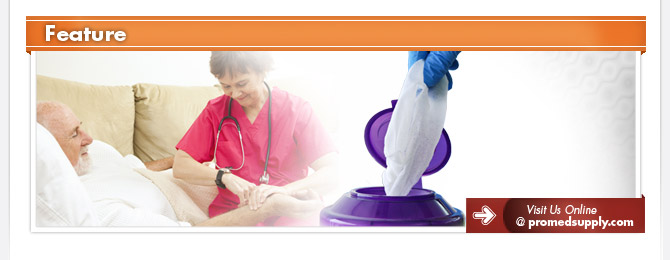| Disinfect to Protect Your Residents
Surface disinfection, along with hand hygiene and other precautions, is key to preventing the spread of healthcare-associated infections (HAIs). When surveyors visit your facility, they will be looking to ensure that you're adhering to the following cleaning and disinfecting protocols1:
- Equipment in transmission-based precaution rooms is either dedicated to that resident and appropriately cleaned or is thoroughly cleaned and disinfected between residents using appropriate agents and procedures;
- High-touch surfaces in the environment have been cleaned and disinfected;
- Small non-disposable equipment such as glucose meters, scissors and thermometers are cleaned and appropriately disinfected after each use for individual resident care;
- Single-use items (e.g., blood glucose lancets and other sharps) are properly disposed of after one use;
- Single resident use items (e.g., basins, bed pans) are maintained to be visibly clean for use, and are disposed of after use by a single resident;
- Resident dressings and supplies are properly stored to maintain their integrity, and soiled dressings and supplies are appropriately discarded; and
- Multiple-use items (e.g., shower chairs, bedside scales, resident lifts, commodes, tubs) are properly cleaned/disinfected between use by other residents.
How you need to disinfect an item depends on how that item is listed in the Spaulding classification system, which groups medical and surgical equipment into three distinct categories1:
- Critical items are those that normally enter sterile tissue or the vascular system, or through which blood flows. Examples include needles, intravenous catheters and indwelling urinary catheters. These items must be sterile when used.
- Semi-critical items touch mucous membranes or skin that is not intact. Examples include thermometers, podiatry equipment and electric razors. Semi-critical items must be meticulously cleaned and then receive a high-level disinfection treatment using an FDA-approved chemo sterilizer agent, or they can be sterilized.
- Non-critical items come into contact with intact skin or do not come into contact with the resident at all. Examples include stethoscopes, blood pressure cuffs and overbed tables. These items must be cleaned periodically and after visible soiling, using an EPA-registered disinfectant detergent or germicide.
Chances are, the majority of the items you come into contact on a daily basis are non-critical items that can be disinfected with EPA-registered products. These disinfectants are commonly available in both spray and wipe formulations. If your facility is currently using spray disinfectants paired with reusable cloths, you’ll need to take precautions to ensure that the cloths are not contributing to the spread of infections. Studies have shown that wiping hard surfaces with contaminated cloths can in turn contaminate hands, equipment and other surfaces.2
Professional Medical's highly trained sales team can help you evaluate your infection prevention strategy and address any gaps in your plan. To learn more, give us a call at (800) 648-5190 or click the link above.
References
1 Centers for Medicare and Medicaid Services. State Operations Manual Appendix PP – Guidance to Surveyors for Long Term Care Facilities (Rev. 70, 01-07-11). Available at: http://www.cms.gov/Regulations-and-Guidance/Guidance/Manuals/downloads/som107ap_pp_guidelines_ltcf.pdf. Accessed February 28, 2013.
2 Centers for Disease Control and Prevention. Guideline for Disinfection and Sterilization in Healthcare Facilities, 2008. Available at: http://www.cdc.gov/hicpac/Disinfection_Sterilization/3_4surfaceDisinfection.html. Accessed February 28, 2013.
| |









